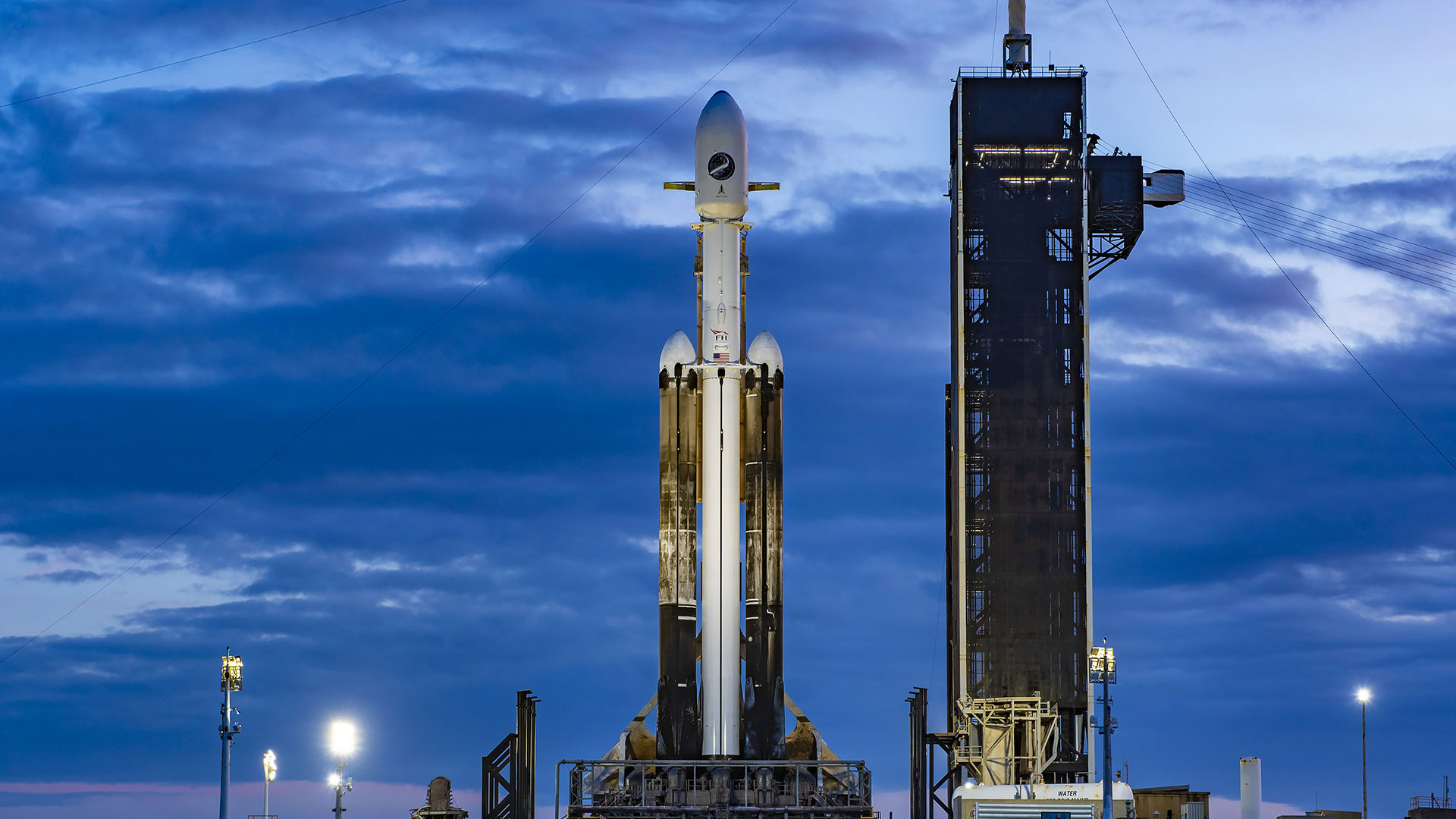Secretive X-37B space plane to launch aboard SpaceX Falcon Heavy rocket tonight after delays
Liftoff of the military's elusive X-37B space plane is scheduled for 8:14 p.m. ET on Monday (Dec. 11).
A SpaceX Falcon Heavy rocket is poised to launch the X-37B space plane for the U.S. Space Force on tonight (Dec. 11) after a one-day delay due to weather, and you can likely watch the action live.
Liftoff of the Falcon Heavy is scheduled to occur from Launch Complex-39A at NASA's Kennedy Space Center in Florida, during a 10-minute window that opens at 8:14 p.m. EST (0114 GMT Dec. 12). If, as expected, SpaceX webcasts the liftoff, you can watch it live here on Lice Science. SpaceX announced its delay of the flight by 24 hours early Sunday.
"Now targeting Monday, December 11 for Falcon Heavy’s launch of the USSF-52 mission, with weather conditions forecasted to improve to 70% favorable for liftoff on Monday night," SpaceX wrote on X (formerly Twitter). "The team will use the time to complete additional pre-launch check outs."
The upcoming launch will be the seventh launch to date for the reusable X-37B space plane its first-ever ride on a Falcon Heavy, which could have consequences for its coming orbital mission.
Five of the six X-37B launches to date have employed United Launch Alliance Atlas V rockets, with one other using a SpaceX Falcon 9. Falcon Heavy, which utilizes three Falcon 9 boosters as its first stage, outclasses both of those other rockets when it comes to getting mass to orbit. According to a recent Space Force release, some of the objectives of the coming X-37B mission, known as OTV-7 ("Orbital Test Vehicle-7"), include "operating in new orbital regimes," which, given the launch vehicle, may indicate a higher orbit than usual, farther from Earth.

Now targeting Monday, December 11 for Falcon Heavy’s launch of the USSF-52 mission, with weather conditions forecasted to improve to 70% favorable for liftoff on Monday night. The team will use the time to complete additional pre-launch check outs → https://t.co/bJFjLCiTbK pic.twitter.com/OsQ6bjWwxKDecember 10, 2023
The upgrade in launch vehicle may also have to do with mass. The X-37B features a cargo bay to house equipment and experiments, and it could be carrying a secondary mission payload that requires Falcon Heavy's added lift capability.
The uncertainty here is not surprising; most details of X-37B missions are classified. However, USSF-52 does carry at least one unclassified experiment: NASA's "Seeds-2" project, which will test the effects of radiation and long-duration spaceflight on plant seeds.
Sign up for the Live Science daily newsletter now
Get the world’s most fascinating discoveries delivered straight to your inbox.
Each successive X-37B mission has been longer than its predecessors, with its most recent orbital jaunt lasting 908 days. That mission, called OTV-6, landed in November 2022.
When Falcon Heavy launches on Sunday, it will be the rocket's ninth mission to date. It will also be the fifth flight for the side boosters supporting this particular mission; the duo most recently launched NASA's Psyche probe, in October of this year.
Originally posted on Space.com.
Josh Dinner is Space.com's Content Manager. He is a writer and photographer with a passion for science and space exploration, and has been working the space beat since 2016. Josh has covered the evolution of NASA's commercial spaceflight partnerships, from early Dragon and Cygnus cargo missions to the ongoing development and launches of crewed missions to the International Space Station, and spent much of 2022 chronicling the epic of NASA's Artemis 1 rocket. He also enjoys building 1:144 scale models of rockets and human-flown spacecraft. Find some of Josh's launch photography on Instagram and at his website, and follow him on Twitter, where he mostly posts in haiku.











